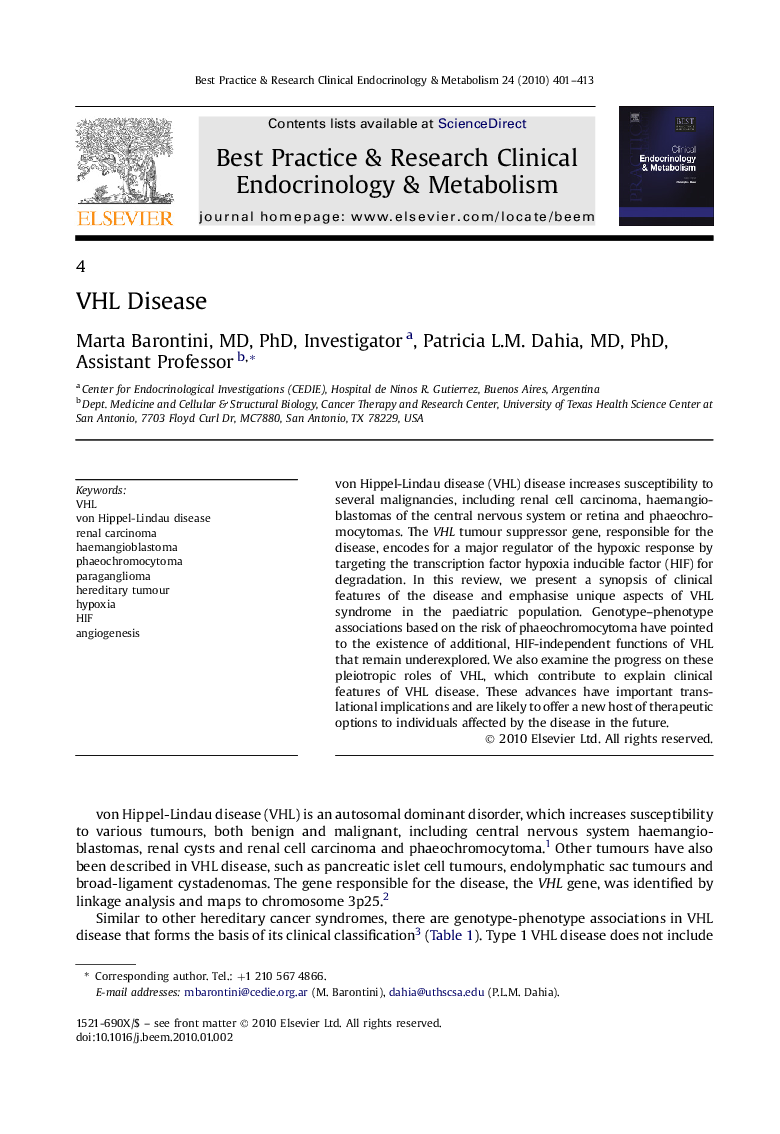| Article ID | Journal | Published Year | Pages | File Type |
|---|---|---|---|---|
| 2791884 | Best Practice & Research Clinical Endocrinology & Metabolism | 2010 | 13 Pages |
von Hippel-Lindau disease (VHL) disease increases susceptibility to several malignancies, including renal cell carcinoma, haemangioblastomas of the central nervous system or retina and phaeochromocytomas. The VHL tumour suppressor gene, responsible for the disease, encodes for a major regulator of the hypoxic response by targeting the transcription factor hypoxia inducible factor (HIF) for degradation. In this review, we present a synopsis of clinical features of the disease and emphasise unique aspects of VHL syndrome in the paediatric population. Genotype–phenotype associations based on the risk of phaeochromocytoma have pointed to the existence of additional, HIF-independent functions of VHL that remain underexplored. We also examine the progress on these pleiotropic roles of VHL, which contribute to explain clinical features of VHL disease. These advances have important translational implications and are likely to offer a new host of therapeutic options to individuals affected by the disease in the future.
